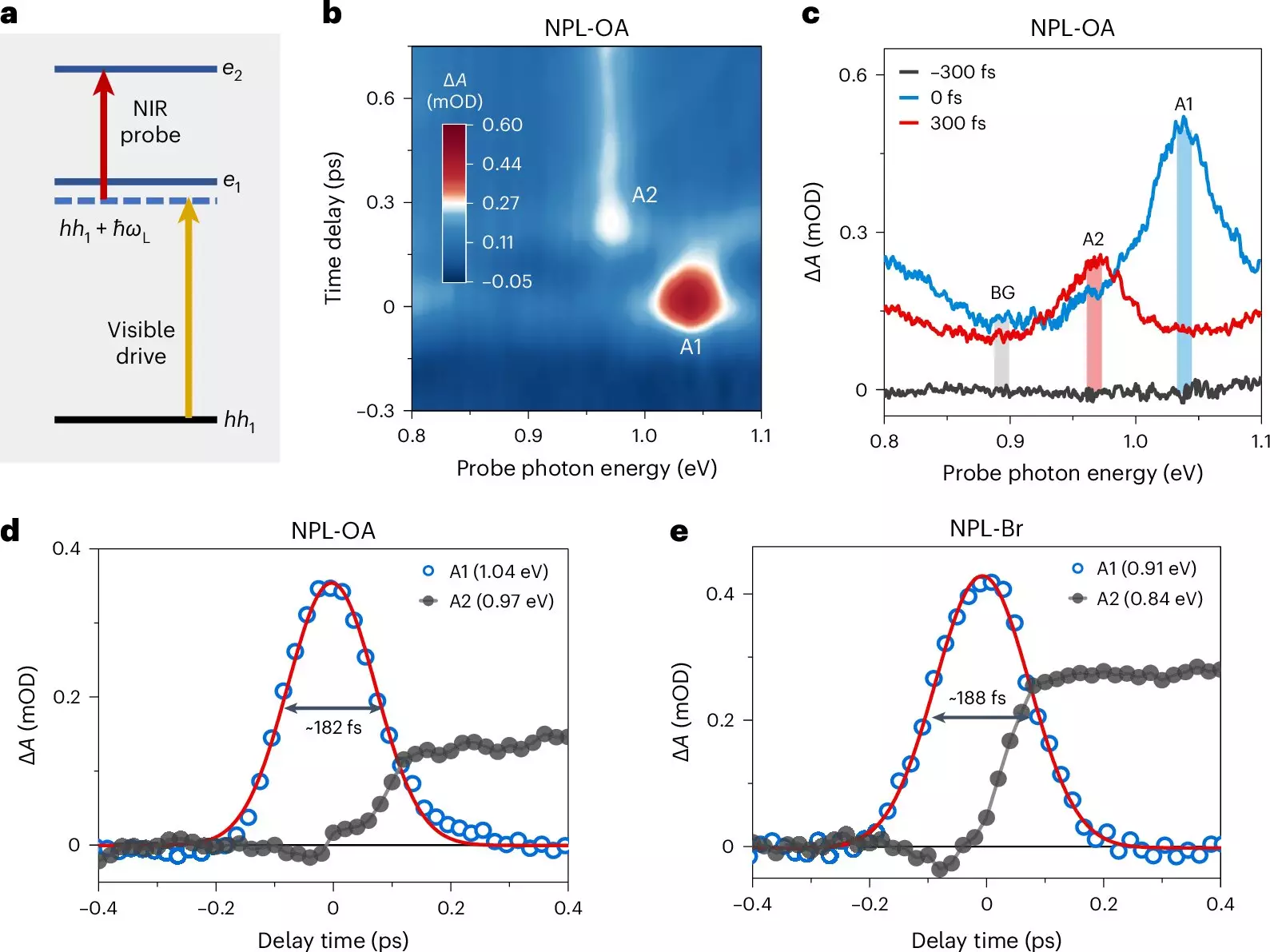Colloidal quantum dots (QDs) have revolutionized the field of nanotechnology and condensed matter physics by bridging the gap between theoretical quantum mechanics and practical applications. These solution-processed semiconductor nanocrystals showcase size-dependent quantum effects, which become apparent through their varying colors. Historically, physicists have understood the concept of quantum effects tied to particle size, but the realization of these concepts in tangible materials eluded researchers until the advent of QDs. As these materials mature, they open up unprecedented avenues for exploring intriguing quantum phenomena, including single-photon emission and the manipulation of quantum coherence.
In the exploration of quantum mechanics, Floquet states emerge as crucial components that describe how light interacts with material systems. These states are characterized by the dressing of quantum states, whereby photons enhance the behavior of electronic states in a medium. However, despite their theoretical significance, the empirical observation of Floquet states has proven challenging. Prior studies predominantly required specialized conditions, such as ultra-low temperatures and vacuum environments, to minimize interference and damage to the samples. Additionally, the driving fields for these experiments were often confined to the infrared, terahertz, or microwave ranges, limiting broader applications of these quantum phenomena.
A significant advancement in our comprehension of Floquet states has come from recent research led by Prof. Wu Kaifeng and his team at the Dalian Institute of Chemical Physics. Their work, published in Nature Photonics, signifies a pivotal moment in directly observing Floquet states in semiconductor materials under ambient conditions. Employing a novel all-optical spectroscopy technique, the researchers utilized quasi-two-dimensional colloidal nanoplatelets, a material class that has evolved considerably over the last decade. The quantum confinement that characterizes these nanoplatelets facilitates interband and intersubband transitions across the visible to near-infrared spectrum, allowing for rich exploration of quantum dynamics.
The study specifically highlights a three-level system formed by the quantum states involved in interband and intersubband transitions. A visibly emitted photon interacts with a heavy-hole state, transitioning it into a Floquet state of comparable parity to an electron state. This provides a unique opportunity for probing interactions using a near-infrared photon, which transitions the system to higher energy quantized electron states. Intriguingly, the research unveiled that, contrary to earlier assumptions where Floquet states were believed to fade quickly, the dephasing process into actual population states occurred within mere hundreds of femtoseconds. Such findings challenge existing paradigms and open new investigative avenues into the temporal dynamics of quantum systems.
The findings presented by Prof. Wu and his collaborators bear significant implications for the field of quantum mechanics and semiconductor technology. Not only does this research represent a breakthrough in observing Floquet states in a more accessible manner, but it simultaneously unveils the underlying physics governing the dynamic behaviors of these states. As Prof. Wu noted, the study lays the groundwork for advancing Floquet engineering in ways that could extend beyond traditional solid-state material properties. This innovation promises new methods for the coherent control of surface and interfacial chemical reactions via nonresonant light fields, expanding the applicability of quantum mechanics to broader chemical and materials science disciplines.
As the field of quantum technology accelerates, the research on colloidal quantum dots and their ambient-condition dynamics stands out as a beacon of progress. The successful observation of Floquet states under less restrictive conditions paves the way for enhanced experimental approaches and applications in various domains, from quantum computing to chemical engineering. Ultimately, as researchers continue to explore the intricate interplay between light and matter, advancements like these reinforce the potential for quantum mechanics to redefine traditional scientific boundaries and foster novel technologies that could transform numerous industries.


Leave a Reply